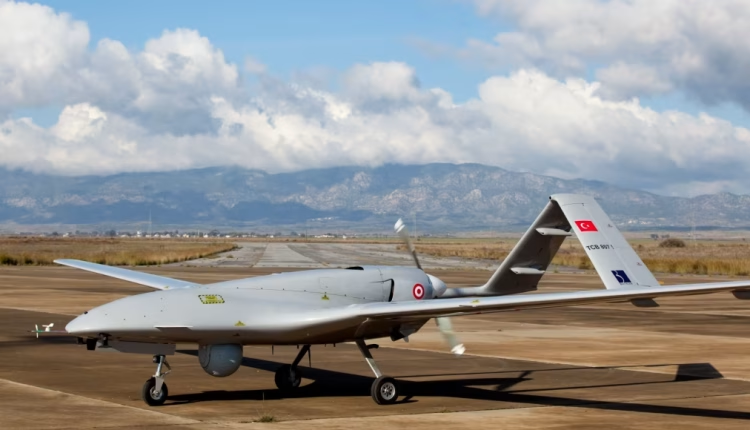
By Lamar Arkandi
QAMISHLI, Syria (North Press) – Amid clashes in northern Syria, the Syrian Democratic Forces (SDF) have shot down multiple Turkish Bayraktar drones, raising questions about the resilience of Turkey’s combat drones. Experts suggest the incidents could impact future sales of Turkish defense technology as countries reconsider their purchases.
Recently, the Qaraqozaq Bridge south of Kobani and the Tishrin Dam in the Manbij countryside, northern Syria, witnessed intense airstrikes by Turkey, which deployed its flagship Bayraktar drones—considered rivals to their American, Israeli, Russian, and Iranian counterparts. The SDF announced that they had shot down several of these drones.
According to the SDF, four Bayraktar drones were downed, in addition to several other Turkish drones used in battles by the Turkish-backed armed factions, aka the Syrian National Army (SNA), and some Turkish military personnel at the bridge and dam.
Military experts estimate that each drone costs around $25 million, meaning Turkey’s losses from the four downed Bayraktar drones amount to approximately $100 million in just a few days.
Sixth globally
Turkey’s Baykar drone technology competes globally, particularly with its latest model, the Bayraktar TB3. This drone boasts a length of over eight meters, a height exceeding two meters, and a wingspan of 14 meters.
Iraqi aviation expert and retired pilot Islam Saadi estimates the maximum weight of the Turkish drone at 1,600 kilograms, with an endurance of nearly 24 hours. He categorizes the drone among long-endurance fighters.
Saadi also noted that Turkey ranks sixth globally in drone production but highlighted that several countries considering purchasing Bayraktar drones are now carefully studying reports on their capabilities, resilience, and vulnerabilities and whether it is easy to down during the battles in which it was used before committing to contracts.
This assessment was echoed by drone engineer Moussa Dghaime, who told North Press, “I know of countries that had agreements to buy Bayraktars but have reconsidered their purchase.”
He explained that the ongoing battles at the Qaraqozaq Bridge and Tishrin Dam—where the SDF has successfully breached the defenses of Turkey’s premier drone and shot several down—have been key factors in shifting opinions.
Dghaime added that while the Bayraktar drones had proven effective in conflicts in Ukraine, Azerbaijan, Iraq, Libya, and Syria, Kurdish fighters appear to have developed tactics to counter them, leading to multiple shootdowns over several days. “This has significantly impacted the market for Bayraktar drones, from which Turkey had been making astronomical profits,” he said.
He also noted that the issue extends beyond Bayraktar sales, affecting Turkish defense exports as a whole. With the SDF destroying Turkish drones and weaponry used by the SNA—often of Turkish origin—Turkey’s military losses continue to mount. As a result, arms exports have sharply declined compared to the booming demand for Turkish weapons in previous years.
Turkish newspapers reported that the country’s military drone, weapons, ammunition, and armored vehicle exports in 2023 were valued at $5.5 billion.
In the same context, economic expert Hisham al-Rais noted that “the demand for Turkish military weapons has significantly dropped compared to the past two years.”
Speaking to North Press, he added, “Turkey generated at least $11 billion from arms sales in 2020, but by 2023, that figure had fallen below $6 billion. Profit declines in the coming years are inevitable.”
Despite its stealth capabilities and sophisticated technology, the Bayraktar drone remains vulnerable. In a statement published last year on its official website, the Kurdistan Workers’ Party (PKK) claimed to possess technology to bring down Turkish drones and reported the destruction of 15, including two Bayraktar models.
